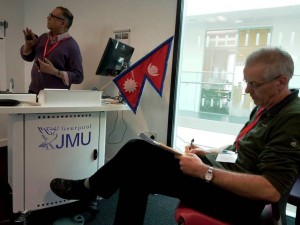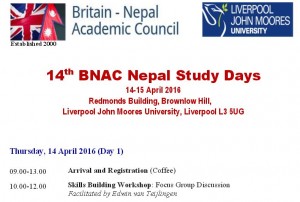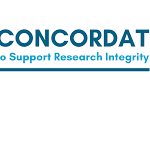 This week BU’s work in Nepal was highlighted in several ways. Most publicly on the wonderful new mural at Talbot Campus. Secondly, BU currently displays some of the entries of images to the past two years of its research photo competition. The photos show the creativity of BU’s academics and students as well as the fascinating range of research taking place at the university. One of these pictures was taken by FHSS Visiting Faculty Dr. Bibha Simkhada during fieldwork in Dhading, Nepal. The selected photos are on display in the Atrium Art Gallery until the 13th of June.
This week BU’s work in Nepal was highlighted in several ways. Most publicly on the wonderful new mural at Talbot Campus. Secondly, BU currently displays some of the entries of images to the past two years of its research photo competition. The photos show the creativity of BU’s academics and students as well as the fascinating range of research taking place at the university. One of these pictures was taken by FHSS Visiting Faculty Dr. Bibha Simkhada during fieldwork in Dhading, Nepal. The selected photos are on display in the Atrium Art Gallery until the 13th of June. 
Last, but not least, another FHSS Visiting Faculty, Poole Hospital NHS Foundation Trust midwife Jillian Ireland published a blog on her involvement in the THET-funded project in Nepal. She reflects on her time as UK volunteer in Nepal. Jilly wrote: ” Three volunteers Andrea Lawrie, David Havelock and I are keen to share what we experienced in a paper sometime soon and today I will condense some of my own reflections. I wrote ‘letters’ (via email) to my Head of Midwifery, Sandra Chitty and to Senior Lecturer in Midwifery at Bournemouth University Dr. Jen Leamon while I was away, using different styles of expression to ‘get at’ my reflections from more than one angle. It helped me to separate out elements of the whole experience.”
Prof. Edwin van Teijlingen
CMMPH













 Dr. Jenny Hall in CMMPH published her latest article ‘Facilitating learning of spirituality in midwifery’ in the academic journal Spiritual Care [1]. She highlights that there has been considerable discussion in the literature around spirituality at the end of life but little relating to childbirth. Perhaps because of this facilitation of learning around the subject is limited. The aim of this article is to raise awareness of these issues and promote future discussion and research.
Dr. Jenny Hall in CMMPH published her latest article ‘Facilitating learning of spirituality in midwifery’ in the academic journal Spiritual Care [1]. She highlights that there has been considerable discussion in the literature around spirituality at the end of life but little relating to childbirth. Perhaps because of this facilitation of learning around the subject is limited. The aim of this article is to raise awareness of these issues and promote future discussion and research.


















 New Nepal scoping review on maternal & neonatal health
New Nepal scoping review on maternal & neonatal health Fourth INRC Symposium: From Clinical Applications to Neuro-Inspired Computation
Fourth INRC Symposium: From Clinical Applications to Neuro-Inspired Computation Writing policy briefs
Writing policy briefs Upholding Excellence: The Concordat to Support Research Integrity
Upholding Excellence: The Concordat to Support Research Integrity ECR Funding Open Call: Research Culture & Community Grant – Application Deadline Friday 12 December
ECR Funding Open Call: Research Culture & Community Grant – Application Deadline Friday 12 December MSCA Postdoctoral Fellowships 2025 Call
MSCA Postdoctoral Fellowships 2025 Call ERC Advanced Grant 2025 Webinar
ERC Advanced Grant 2025 Webinar Horizon Europe Work Programme 2025 Published
Horizon Europe Work Programme 2025 Published Horizon Europe 2025 Work Programme pre-Published
Horizon Europe 2025 Work Programme pre-Published Update on UKRO services
Update on UKRO services European research project exploring use of ‘virtual twins’ to better manage metabolic associated fatty liver disease
European research project exploring use of ‘virtual twins’ to better manage metabolic associated fatty liver disease